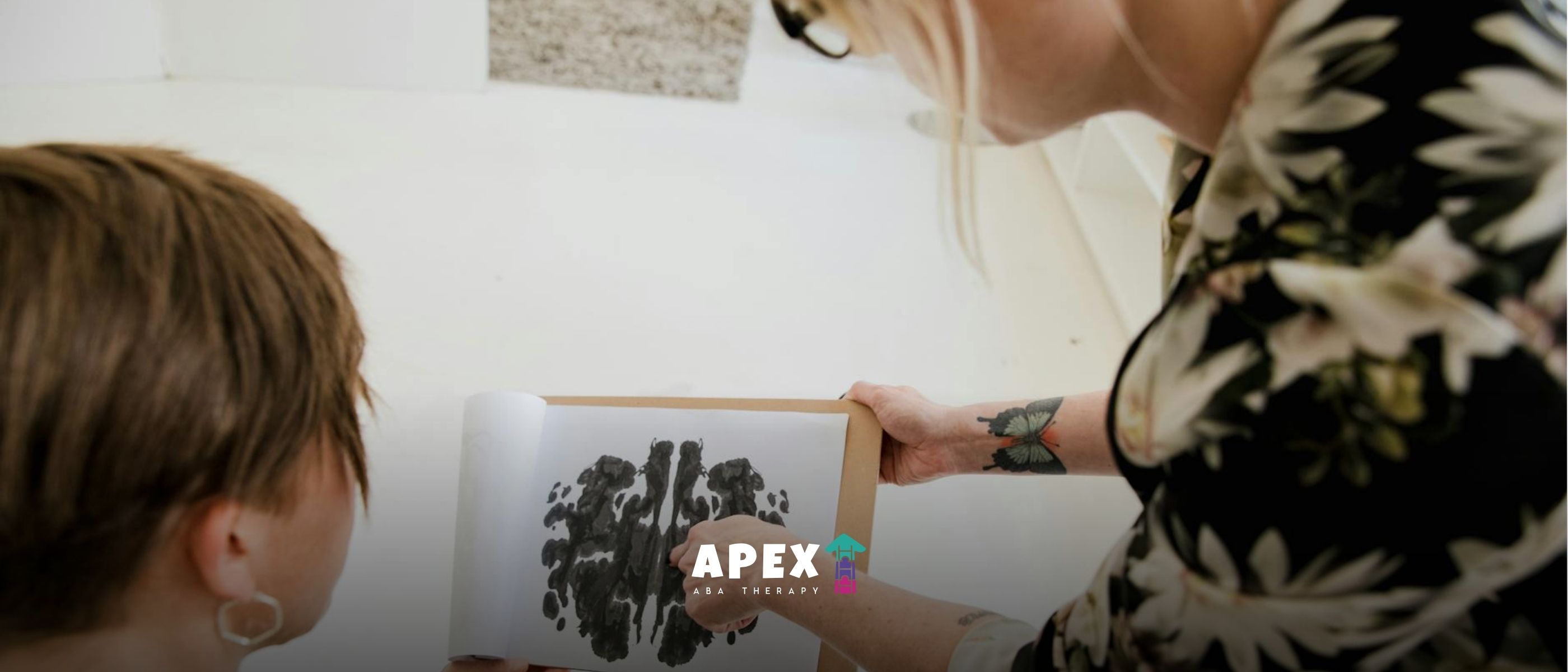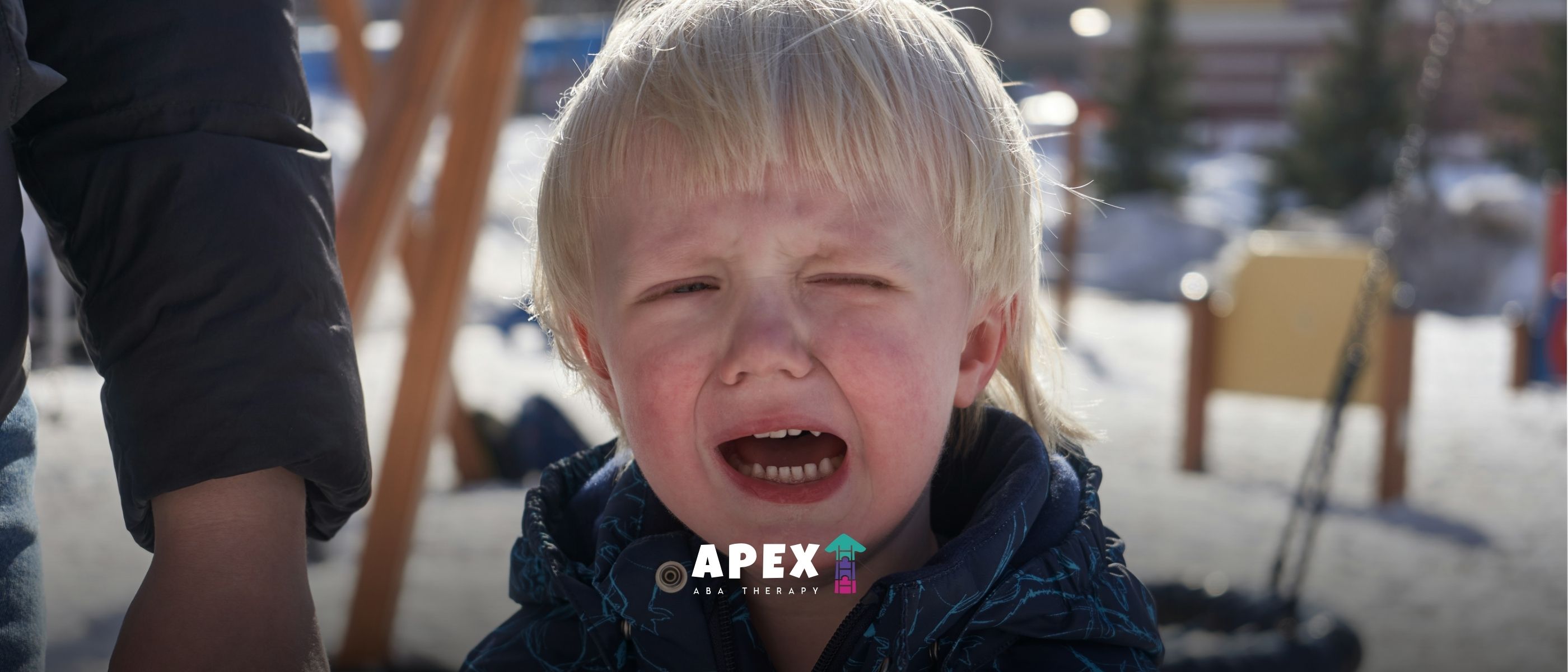26 Best Book, Movie, and TV Characters on the Autism Spectrum
This article explores the evolution of such characters and their impact on raising awareness and fostering understanding of autism. We will also discuss notable examples from the realms of books, movies, and television.
.jpg)
26 Best Book, Movie, and TV Characters on the Autism Spectrum
Portrayals of Autism in Books, Movies, and TV Shows
The representation of autism in various forms of media has become increasingly important in recent years. By featuring fictional characters on the autism spectrum, books, movies, and TV shows have the power to educate, raise awareness, and foster a sense of inclusion for individuals on the autism spectrum.

Importance of Representation
Representation plays a crucial role in allowing individuals with autism to see themselves reflected in the stories they consume. It provides a sense of validation, understanding, and acceptance. Moreover, it helps to reduce stigmas surrounding autism, promoting a more inclusive society.
Books, movies, and TV shows that accurately portray characters with autism can also serve as valuable resources for individuals seeking to learn more about the experiences and perspectives of those on the spectrum. They provide a platform for showcasing the challenges faced by individuals with autism as well as their unique strengths and abilities.
Fictional Characters on the Autism Spectrum
Across literature and media, there is a growing number of memorable characters that have been created to authentically represent individuals on the autism spectrum. These characters navigate their respective stories with diverse personalities, strengths, and challenges, offering a range of perspectives for readers and viewers.

These are just a few examples of the many famous characters with autism that have made an impact in literature, movies, and television. These characters provide opportunities for empathy, education, and connection, showcasing the wide spectrum of experiences within the autism community.
By exploring the rich tapestry of these fictional characters, readers and viewers can gain a deeper understanding of the challenges faced by individuals on the autism spectrum, while also appreciating their unique perspectives and contributions.
The inclusion of these characters not only contributes to a more diverse and inclusive media landscape but also serves as a source of inspiration and encouragement for individuals on the autism spectrum and their caregivers. Through their stories, we can celebrate the strengths and abilities of those with autism while promoting understanding and acceptance in society.
Autism in Literature
Books have long been a medium for exploring diverse experiences and shedding light on various aspects of the human condition. Autism is no exception, and many authors have created book characters with autism to provide readers with a deeper understanding and appreciation of the autism spectrum. These characters offer unique perspectives and stories that resonate with both individuals on the spectrum and their caregivers.
Book Characters with Autism
In the world of literature, there are numerous notable books that feature characters on the autism spectrum. These characters are often portrayed with depth, empathy, and authenticity, allowing readers to gain insight into their experiences. Some popular examples include:
These books not only entertain but also provide valuable insights into the lives of individuals on the autism spectrum. They help to break down stereotypes and misconceptions, promoting a more inclusive understanding of autism.
Notable Autistic Protagonists
Within the realm of books with autistic characters, certain protagonists have garnered significant attention for their captivating stories and authentic representation. These characters serve as beacons of inspiration and have touched the hearts of many readers. Some notable autistic protagonists include:
These characters have played a significant role in expanding the representation of autism in literature and have paved the way for more diverse and authentic portrayals. Their stories offer insights into the challenges, triumphs, and unique perspectives of individuals on the autism spectrum.
Exploring books with autistic characters not only provides an opportunity for individuals on the spectrum to see themselves represented but also fosters empathy and understanding among readers. These stories have the power to educate, inspire, and encourage dialogue around autism. By delving into the world of literature, we can broaden our perspectives and embrace the diversity of human experiences.
Autism on the Big Screen
Movies have played a significant role in raising awareness and promoting autism representation in popular culture. Numerous films have featured characters on the autism spectrum, offering diverse and compelling portrayals. These movies not only entertain but also provide insight into the experiences of individuals with autism. Let's explore some remarkable examples.
Movies with Characters on the Autism Spectrum
Memorable Autistic Characters in Film
While it would be impossible to mention all the memorable autistic characters in film, here are a few notable examples that have captivated audiences:
- Raymond Babbitt from Rain Man (1988) portrayed by Dustin Hoffman, brought autism into the mainstream consciousness. Raymond's exceptional memory skills and unique mannerisms showcased the complexities and challenges faced by individuals on the autism spectrum.
- Temple Grandin from Temple Grandin (2010), played by Claire Danes, is a biographical film based on the real-life experiences of the renowned animal scientist and autism advocate. The movie highlights Temple's determination, resilience, and her groundbreaking contributions to animal behavior and welfare.
- Christian Wolff from The Accountant (2016), portrayed by Ben Affleck, portrays an autistic forensic accountant with exceptional mathematical abilities. This action-thriller sheds light on the strengths and talents that individuals with autism can possess.
- Max Jerry Horovitz from Mary and Max (2009) is an animated film that explores the unique friendship between Max, a middle-aged man with Asperger's syndrome, and Mary, a young girl from Australia. The movie delves into the challenges faced by both characters and the power of human connection.
These films, among others, provide a diverse range of autistic characters, each contributing to a better understanding of autism. By watching these movies, individuals on the autism spectrum and their caregivers can find relatable characters and gain a sense of validation and representation.
Autism on the Small Screen
Television has played a significant role in representing characters with autism and raising awareness about the autism spectrum. Several TV shows have featured autistic characters, providing insightful and impactful portrayals. Let's explore some of the TV shows that have made strides in featuring characters with autism and the impact they've had.
TV Shows Featuring Characters with Autism
Several TV shows have prominently featured characters on the autism spectrum, shedding light on their unique perspectives and experiences. These shows not only entertain but also educate viewers about the challenges faced by individuals with autism. Some notable TV shows that have featured characters with autism include:

Impactful Autistic Characters in Television
The portrayal of autistic characters in TV shows has had a profound impact on audiences, particularly individuals on the autism spectrum and their families. These characters provide representation and allow viewers to relate to their experiences. The following are some of the impactful autistic characters in television:
- Sam Gardner from Atypical: Sam's journey of self-discovery and navigating relationships resonates with many individuals on the autism spectrum. The show highlights his strengths and challenges, promoting understanding and acceptance.
- Dr. Shaun Murphy from The Good Doctor: Dr. Shaun Murphy's exceptional medical skills and unique perspective on the world challenge stereotypes about autism. The character showcases the capabilities and potential of individuals on the autism spectrum.
- Max Braverman from Parenthood: Max's portrayal provides a realistic depiction of a child with autism and the impact it has on his family. The show explores the challenges and triumphs of raising a child with autism, promoting empathy and understanding.
- Sonya Cross from The Bridge: Sonya Cross, a detective with Asperger's syndrome, showcases the unique strengths and challenges of individuals on the autism spectrum. Her character challenges stereotypes and highlights the diversity within the autism community.
- Matilda from Everything's Gonna Be Okay: Matilda, a teenager with autism, brings a fresh and authentic representation to the screen. The show explores her experiences, relationships, and journey towards independence.
- Attorney Woo from Extraordinary Attorney Woo: is a popular South Korean television series that has gained a significant following, not only in its home country but also among international audiences.
By featuring autistic characters in TV shows, these shows have made significant strides in promoting autism representation in television. They have increased awareness, fostered understanding, and encouraged dialogue about the autism spectrum.
The power of these TV shows lies in their ability to inspire and empower individuals on the autism spectrum, as well as educate the general public about autism. Through relatable and meaningful portrayals, these shows have made a positive impact on the perception and acceptance of individuals with autism.
The Power of Representation
Seeing autistic characters portrayed in books, movies, and TV shows can have a profound impact on individuals on the autism spectrum and their caregivers. The representation of autism in media provides an opportunity for greater understanding, empathy, and appreciation of the diverse experiences of those with autism. In this section, we will explore the positive effects of seeing autistic characters and the encouragement it brings to individuals on the autism spectrum.
Positive Effects of Seeing Autistic Characters
The portrayal of autistic characters in various forms of media has several positive effects. Firstly, representation helps to increase awareness and understanding of autism among the general population. By seeing autistic characters on screen or reading about them in books, people can gain insights into the challenges and strengths associated with autism. This increased awareness can foster empathy and promote inclusivity in society.
Secondly, seeing autistic characters in media can provide a sense of validation and recognition for individuals on the autism spectrum. It allows them to see themselves reflected in characters who share similar experiences, struggles, and achievements. This validation can help build self-esteem, reduce feelings of isolation, and foster a sense of belonging.
Moreover, representation can also serve as a source of inspiration and motivation for individuals with autism. Seeing characters on the autism spectrum overcome obstacles, achieve their goals, and contribute to their communities can instill a sense of hope and possibility. It encourages individuals with autism to embrace their unique strengths and pursue their passions, knowing that they too can lead fulfilling lives.
By showcasing autistic characters in a positive light, media representation also challenges stereotypes and dispels misconceptions about autism. It promotes a more accurate understanding of autism as a diverse and multifaceted condition, highlighting the unique abilities and talents that individuals on the spectrum possess.
Encouragement for Individuals on the Autism Spectrum
For individuals on the autism spectrum, seeing characters who share their experiences can be incredibly empowering. It can provide a sense of encouragement and reinforce the belief that they are capable of achieving their dreams. Furthermore, media representation can help foster a sense of community among individuals on the spectrum, connecting them with others who may face similar challenges and triumphs.
For caregivers, representation in media can offer a valuable resource for starting conversations about autism with their loved ones. It can provide a platform to discuss different aspects of autism, promote understanding, and facilitate open dialogue about the unique experiences of individuals on the spectrum.
Additionally, seeing positive portrayals of autism in media can offer caregivers hope and reassurance, reminding them that their support and advocacy can make a difference in the lives of those they care for.
In conclusion, the power of representation cannot be underestimated. The inclusion of autistic characters in books, movies, and TV shows has the potential to create a more inclusive and accepting society.
By showcasing the diverse experiences of individuals on the autism spectrum, media representation not only increases awareness and understanding but also provides encouragement and inspiration for individuals with autism. It is through these portrayals that we can foster a more inclusive society that celebrates the unique abilities and contributions of all individuals, regardless of their neurodiversity.
Conclusion
The inclusion of autistic characters in literature, film, and television has come a long way, promoting understanding and empathy towards individuals on the autism spectrum. These characters, whether from books, movies, or TV series, offer audiences a glimpse into the unique perspectives and strengths of individuals with autism.
By portraying them as multi-dimensional and relatable, media has played a crucial role in breaking down stereotypes and raising awareness about autism. As society continues to progress in its understanding and acceptance of neurodiversity, these representations will become even more essential in fostering a more inclusive world.
Sources
Frequently Asked Questions
.jpg)
Autism And Bed Wetting: Unlocking Solutions
Explore the connection between autism and bedwetting and find practical insights and solutions for parents and caregivers. Discover how understanding and support can make a difference in managing this common challenge for children and individuals on the autism spectrum.

Proven Examples of Smart Goals for Students with Autism
Unlock the potential of students with autism through proven examples of SMART goals. Set them up for success!
.jpg)
What is the Sensory Processing Disorder ICD-10 Code?
If you or someone you know has been diagnosed with Sensory Processing Disorder (SPD), you may have heard of the ICD-10 code. In this article, we'll explain what the SPD ICD-10 code is, what it means, and why it's important.

Understanding Vestibular Stimming in Autism
Demystifying vestibular stimming in autism: Understand the impact, strategies, and support for individuals. Uncover the power of self-regulation through stimming.

Do Amish Kids Get Autism?
Explore the prevalence of autism in Amish children and uncover the factors that may contribute to this phenomenon. Delve into the unique characteristics of Amish communities and their impact on autism rates.

Breaking Barriers: Free Sensory Toys for Autism That Make a Difference
Discover life-changing free sensory toys for autism! Unlock the power of sensory play for children with autism.

Famous People Thriving with Autism or Aspergers Syndrome
Discover the extraordinary journeys of famous people thriving with autism and Asperger's syndrome. Unveil the inspiring stories of icons who break stereotypes.

IEP Goals for Autism: Ultimate Guide
Unlock the potential: Constructing meaningful IEP goals for autism to support your child's growth and development. Discover strategies and examples!

Young Celebrities with Autism
Discover inspiring young celebrities with autism and their journeys in entertainment and advocacy.
.jpg)
Autism Hand Posturing: Causes, Types, and Management
Autism hand posturing refers to repetitive and often purposeless movements or postures of the hands and fingers seen in individuals with autism. These movements range from simple hand flapping to more complex finger twisting and tapping.

Distinguishing ADHD vs Autism Stimming
ADHD stimming vs autism stimming: Discover the motivations and characteristics behind these behaviors in individuals.

Addressing Rigid Thinking in Autism
Unlocking flexibility in autism! Discover strategies, therapy, and tools to address rigid thinking for a brighter future.

DSM 6 Release Date Revealed
Unlock the future with DSM-6! Discover the release date and anticipated changes in the mental health landscape.

Why Do Autistic People Rock?
Uncover insights with empathy, exploring the diverse ways rocking serves as a coping mechanism and sensory regulation for individuals on the autism spectrum. Join us in celebrating the beauty of neurodiversity, fostering understanding and appreciation for this distinctive aspect of autistic experience.

Signs Your Toddler Is Not Autistic
Discover reassuring signs that your toddler may not be autistic in this human-centered guide. Explore the joy of your child's unique developmental journey, celebrating their social engagement and communication skills.
.jpg)
Facial Features & Physical Characteristics Of Autism
Some researchers believe that these physical characteristics are related to the underlying neurological differences in individuals with autism.

The Three Main Causes of Autism: Exploring Genetics, Environment, and Brain Differences
Autism is influenced by genetics, environmental factors, and brain differences. Learn how these three causes contribute to the development of the condition.

What are the Common Behaviors of Autism?
Autism behaviors can vary widely. Learn about the most common traits, from social difficulties to sensory sensitivities, and how ABA therapy can support progress.

What Age is Too Late for ABA Therapy?
It’s never too late to start ABA therapy. Discover how children, teens, and adults can still make meaningful progress with personalized ABA support.

Is In-Home ABA the Right Fit for Your Child? Here’s What You Need to Know
In-home ABA therapy offers a tailored approach to support your child’s development. Learn how it can improve key skills like communication, social interaction, and more.

How Families Can Make ABA Therapy a Positive and Successful Experience
Learn how families can ensure ABA therapy is a positive, successful experience. Discover tips for involvement, consistency, and support to make ABA effective.

Can a Child Have Autism and Still Talk Normally?
Can a Child Have Autism and Still Talk Normally?

What Are the Red Flags for Autism in a 2-Year-Old?
Autism Red Flags in 2-Year-Old Children | Apex ABA

Is Autism a Lifelong Condition?
Is Autism a Lifelong Condition? Understanding The Journey

Best Age to Start ABA Therapy & What Parents Should Know
Best Age to Begin ABA Therapy for Children | Apex ABA

What’s the Difference Between High-Functioning Autism and Asperger’s?
Difference Between High-Functioning Autism and Asperger’s

ABA Therapy Enhancing Social Skills: A Key to Improved Communication and Interaction for Children with Autism
How ABA Therapy Helps Children Build Social Skills

Misconceptions About ABA Therapy: Clearing Up the Myths
Common Misconceptions About ABA Therapy | Apex ABA

What Does It Mean to Be “On the Spectrum”?
What Does It Mean to Be on the Autism Spectrum? | Apex ABA

Understanding the Power of Functional Behavior Assessment ABA
Effective ABA Techniques for Behavioral Intervention

Discover How ABA Helps ADHD in Your Child’s Life
How ABA Therapy Helps Children with ADHD | Apex ABA

Life-Changing ABA Therapy Case Studies You Need to Know
Real Success Stories from ABA Therapy Journeys | Apex ABA

Can Children “Outgrow” Autism?
Can Children Outgrow Autism? Understanding the Facts

Is Autism a Mental Illness or a Developmental Disorder?
Mental Illness or Developmental Disorder Explained

Is Autism More Common in Boys Than Girls?
Autism in Boys vs Girls: What the Research Reveals

What is the Difference Between Autism and Sensory Processing Disorder?
Autism vs Sensory Processing Disorder Differences | Apex ABA

What's the Difference Between Autism and Speech Delay?
Autism vs Speech Delay & Key Differences Explained | Apex

ABA Therapy in North Carolina: A Complete Guide for Families
Learn everything about ABA therapy in North Carolina, including services, costs, insurance coverage, and how to choose the best ABA provider in North Carolina.

ABA Therapy vs Preschool: Making the Right Choice Explained
Learn the key differences between ABA therapy and preschool to help you choose the best option for supporting your child’s early learning and development.

Which Personality Type Is Most Likely to Be Autistic?
Which Personality Type Is Most Likely to Be Autistic? | Apex ABA

Why Consistency Matters: What Happens If ABA Therapy Ends Prematurely
What Happens If ABA Therapy Is Stopped Too Early? | Apex ABA

How Can You Gain an Autistic Person’s Attention? Tips for Meaningful Connection
How Can You Gain an Autistic Person’s Attention?

Sensory Sensitivity and Sixth Sense: What Autism Research Shows
Do Autistic People Have Sixth Sense? | Apex ABA

What Happens If Autism Is Left Untreated?
Can Autism Get Worse If Untreated? | Apex ABA

What Not To Do With An Autistic Child: Avoid These 10 Mistakes
What Not To Do With An Autistic Child? | Apex ABA

Coping with Regressive Autism: Tips for Parents
What is Regressive Autism? | Apex ABA

Do Autistic Kids Live with Parents Forever? Here’s the Reality
Do autistic kids live with parents forever? Discover the facts about independence and living arrangements in autism with expert-backed insights.

Red Flags in ABA Therapy: What Parents Must Watch For
What are the red flags in ABA therapy? Learn to identify warning signs for safe, effective autism treatment in this blog.

Can You Go from Level 3 Autism to Level 1? Is It Possible?
Can you go from level 3 autism to level 1? Learn about progress, therapy, and support options with expert help from Apex ABA.

Autism vs Introversion: How to Tell the Difference
Is it autism or just introversion? Learn the key differences and signs with expert insights from Apex ABA.

ABA for Managing Transitions: Tips to Ease Change for Kids
Learn how ABA for managing transitions helps children with autism handle change smoothly.

Understanding the 7 Dimensions of ABA for Better Outcomes
Discover the 7 Dimensions of ABA and how they can lead to better outcomes.

5 Unique Autistic Love Languages You Should Know About
Discover the 5 unique autistic love languages that can enhance your relationships.

Transforming Futures: Improving Lives of Kids with Autism
Discover how innovative strategies are focused on improving lives of kids with autism.

ABA Therapy Techniques for Addressing Repetitive Behaviors in Autism
Harnessing ABA Strategies to Tackle Repetitive Behaviors in Autism

The Role of ABA Therapy in Enhancing Communication Skills
Transforming Communication for Children with Autism Through ABA Therapy

How ABA Therapy Supports Effective Communication in Nonverbal Children
Unlocking Speech Through ABA: Transformative Paths for Nonverbal Children

How to Help Your Child Transfer Skills Learned in ABA Therapy to Real Life
Unlocking Real-World Success for Children in ABA Therapy

How ABA Therapy Helps Children Develop Better Organizational Skills
Empowering Children with ABA Therapy for Enhanced Organizational Skills

The Importance of Creating a Structured Routine in ABA Therapy
How Structured Routines Transform ABA Therapy for Autism

The Role of ABA Therapy in Developing Conflict Resolution Skills
How ABA Therapy Transforms Conflict Resolution Competence

The Importance of Generalization in ABA Therapy for Autism
Unraveling the Role of Generalization in Enhancing ABA Therapy Outcomes

Why ABA Therapy is Crucial for Parents of Children with Autism
The Transformative Impact of ABA Therapy on Families with Autistic Children

How to Involve Parents in the ABA Therapy Process
Maximize Parent Engagement in ABA Therapy for Better Outcomes

What are the Core Principles of ABA Therapy?
Exploring the Cornerstones of Applied Behavior Analysis

Why Communication is Key in ABA Therapy for Autism
The Crucial Role of Communication in ABA Therapy for Autism

Why ABA Therapy Works for Children with Autism Regardless of Severity
Effective ABA Interventions for All Levels of Autism

Why It’s Important to Maintain a Balanced Approach to ABA Therapy
Balancing Effectiveness and Ethics in ABA Therapy

The Role of ABA Therapy in Developing Adaptive Behavior Skills
Exploring How ABA Therapy Transforms Lives

The Benefits of Combining ABA Therapy with Speech Therapy
Maximizing Development with Integrated Therapy Approaches

What to Expect During an ABA Therapy Session
Demystifying ABA Therapy Sessions: A Comprehensive Overview

How ABA Therapy Enhances Cognitive Functioning in Children with Autism
Exploring the Influence of Applied Behavior Analysis on Autism Cognition

How ABA Therapy Helps Children with Autism with Transitions Between Activities
Easing Transitions for Children with Autism: The Role of ABA Therapy

How to Foster Cooperation Between Parents and Therapists in ABA Therapy
Building Effective Partnerships in ABA Therapy

The Role of Positive Reinforcement in ABA Therapy
Exploring the Impact of Positive Reinforcement in Modern ABA Therapy

Why ABA Therapy is Effective for Children of All Ages
Understanding the Reach and Impact of ABA Therapy Across Age Groups

How to Support Your Child’s Emotional Growth with ABA Therapy
Harnessing ABA Therapy for Enhancing Emotional Development in Children with Autism

The Role of ABA Therapy in Enhancing Peer Relationships for Children with Autism
Harnessing ABA Therapy to Boost Social Connections Among Autistic Children

How to Overcome Common Challenges in ABA Therapy
Navigating Hurdles in ABA Therapy: Strategies and Solutions

How to Manage Behavioral Expectations with ABA Therapy
Understanding Applied Behavior Analysis in Behavioral Management

How ABA Therapy Promotes Emotional Regulation in Children with Autism
Unlocking Emotional Balance: ABA Therapy's Role in Autism

How ABA Therapy Improves Social Skills in Children with Autism
Harnessing ABA Therapy to Enhance Social Competency in Autistic Children

The Role of ABA Therapy in Classroom Success for Children with Autism
Harnessing ABA for Academic and Social Growth in Autism

The Importance of Evaluating and Revising ABA Therapy Goals Regularly
Regular Evaluations: The Cornerstone of ABA Therapy Success

How to Choose the Right ABA Therapy Program for Your Child
Finding the Perfect ABA Therapy Fit for Your Child

The Role of Behavior Analysts in Implementing ABA Therapy
Understanding the Vital Contributions of Behavior Analysts in ABA Therapy

The Role of RBTs (Registered Behavior Technicians) in ABA Therapy
A Closer Look at the Essential Work of RBTs in ABA Therapy

What Makes ABA Therapy Effective for Different Learning Styles?
Unraveling the Flexibility and Effectiveness of ABA Therapy

Understanding the Importance of Data Collection in ABA Therapy
The Role of Data in Shaping Effective ABA Therapy

How ABA Therapy Helps with Toilet Training in Children with Autism
Unlocking Independence: ABA's Role in Autism Toilet Training

The Importance of Encouraging Natural Play in ABA Therapy
Revolutionizing ABA Therapy with Natural Play

How to Make the Most of ABA Therapy at Home
Enhancing ABA Therapy Practices Within Your Home

How to Make ABA Therapy Fun and Engaging for Children with Autism
Transforming ABA Therapy into a Fun Learning Journey

The Role of ABA Therapy in Addressing Verbal and Nonverbal Communication in Autism
Enhancing Communication Skills in Autism Through ABA Therapy

Understanding the Role of Family in ABA Therapy for Autism
The Crucial Impact of Family Engagement in Autism Therapy

How to Handle Setbacks and Challenges in ABA Therapy
Navigating Difficulties and Setbacks in ABA Therapy for Children

How ABA Therapy Can Help Children Build Stronger Relationships with Peers
Unpacking the Influence of ABA Therapy on Peer Relationships in Children

Understanding the Concept of Shaping in ABA Therapy
Demystifying Shaping Techniques in Applied Behavior Analysis

How ABA Therapy Enhances Independent Living Skills in Autism
Unlocking Independence: The Role of ABA Therapy in Autism
.jpg)
90+ Reading Statistics, Facts and Demographics
In this article, we will dive into 60 reading statistics that shed light on the importance of reading and its impact on different aspects of life.



